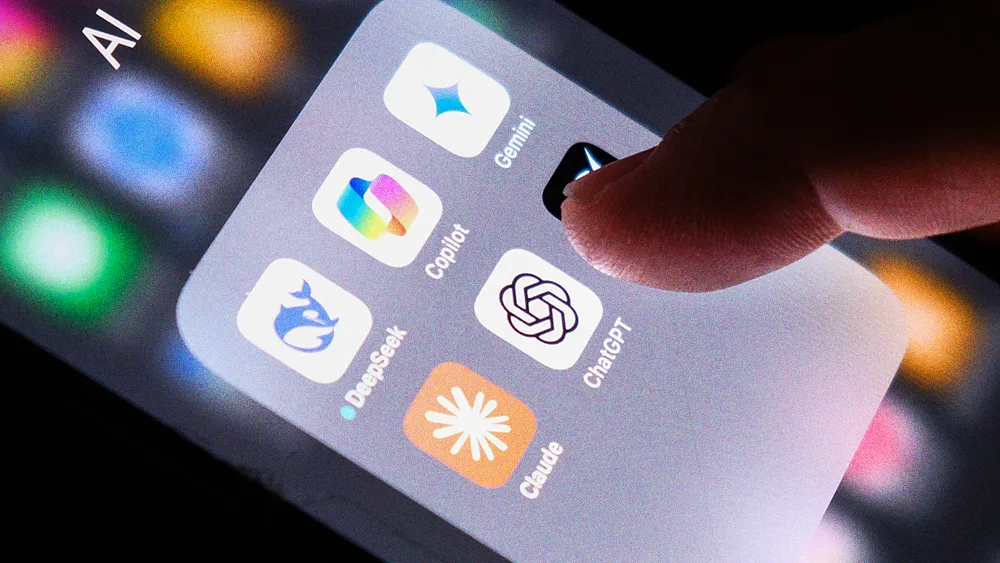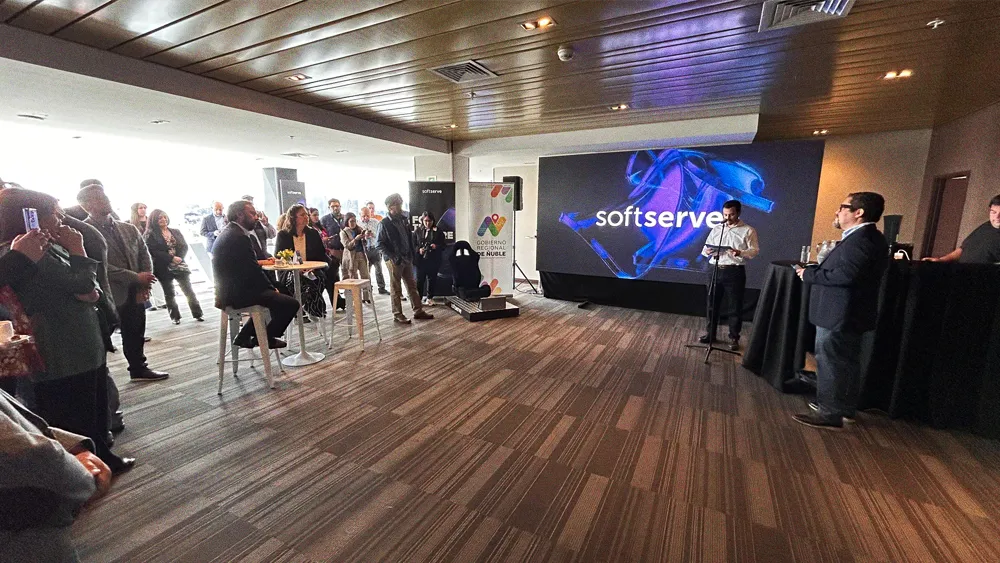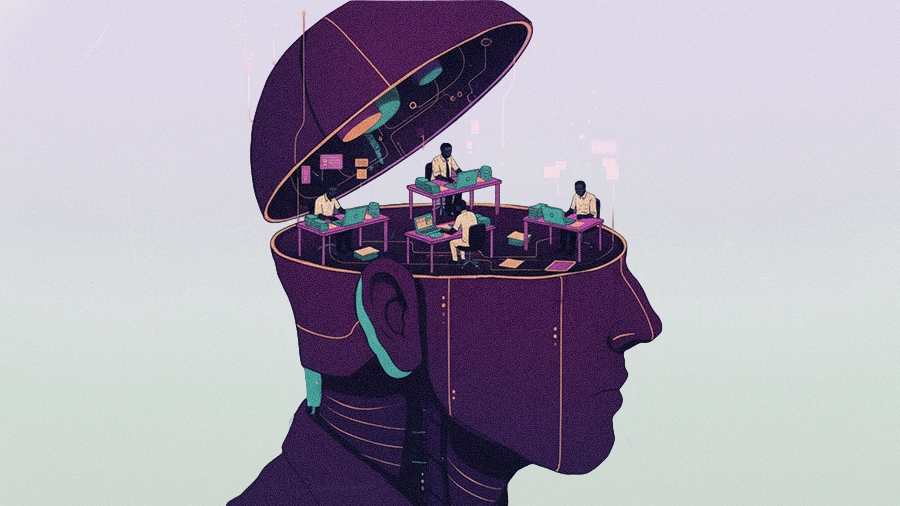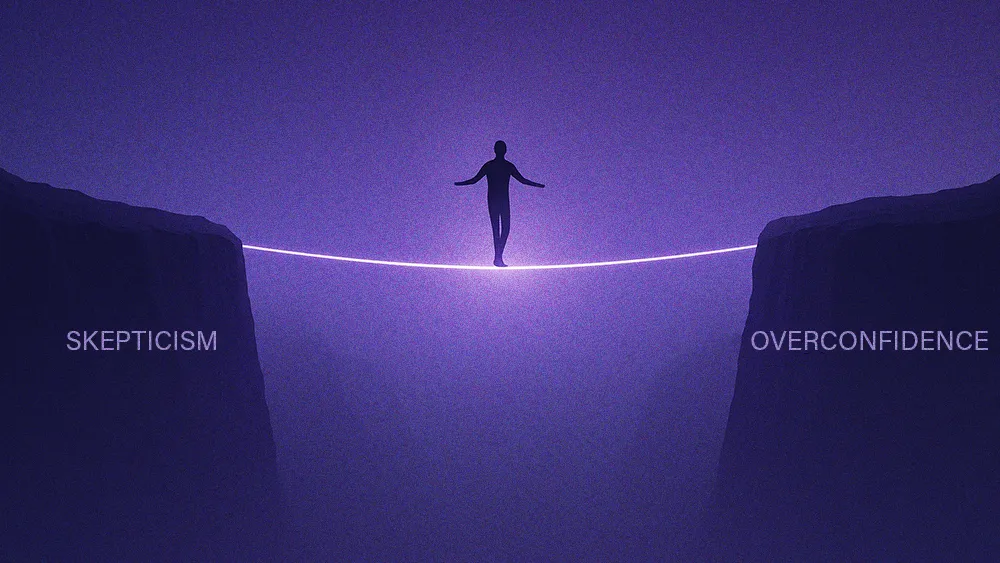A bioscience CPO’s human-centered approach to AI that actually drives team-wide impact
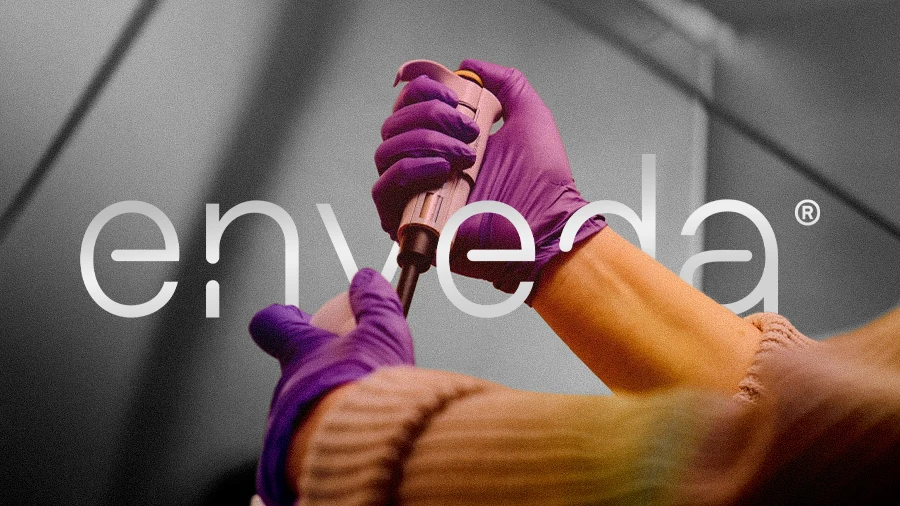
Key Points
In the race to adopt generative AI, many companies are building tools without a clear purpose, creating a potential AI bubble.
We spoke with Robert Buckley, Chief People Architect at Enveda, who offers a simple thesis for AI innovation: build only where technology can measurably reduce activation energy.
Buckley explains how his team applies this philosophy to recruiting and suggests that for AI to succeed, HR must evolve from a service provider to a strategic partner.
He contends that building a foundation of trust through transparency and a strong culture is the key to overcoming employee anxiety and successfully integrating new technology.
If you're going to build AI, you have to have a thesis. Without one, you're just building, and you might get lucky or you might not. A thesis is what guides what you should build. Ours is simple: reduce activation energy.
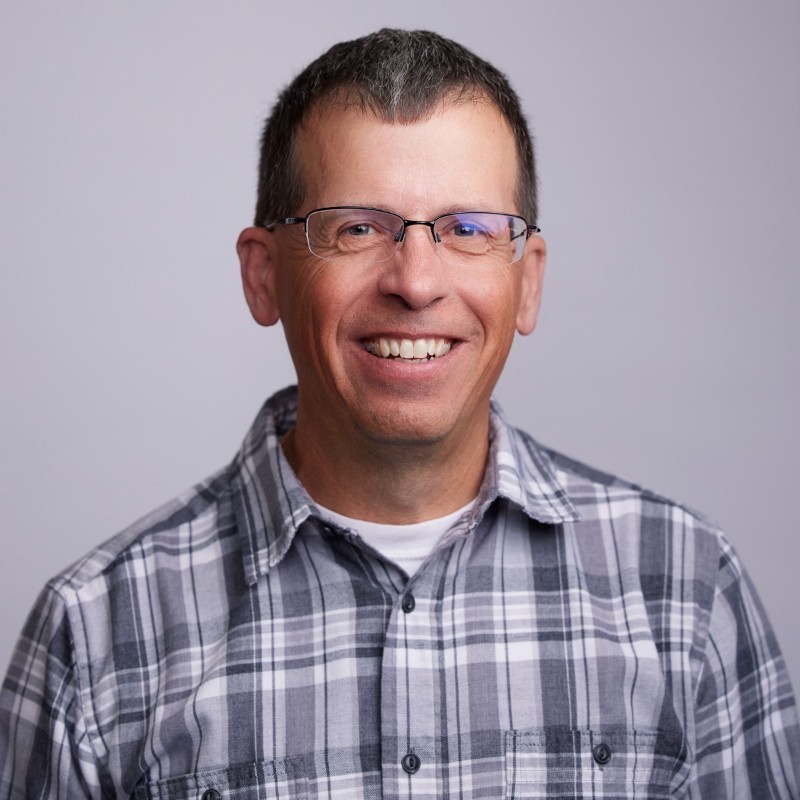
Robert Buckley
Chief People Architect
Enveda
In the scramble for generative AI, too many companies are building tools without a clear “why.” For companies at this crossroads, navigating the hype without getting caught in an AI bubble is a challenge. A more thoughtful approach, however, offers a simple filter: build only where technology can measurably reduce the friction that slows people down.
HR should lead this transformation, according to Robert Buckley, the Chief People Architect at Enveda. An HR architect with decades of experience at high-growth startups like Thumbtack and giants like eBay and General Electric, Buckley’s approach starts with a clear thesis. “If you’re going to build AI, you have to have a thesis. Without one, you’re just building, and you might get lucky or you might not. A thesis is what guides what you should build. Ours is simple: reduce activation energy,” he says.
Boss’ blessing: Buckley’s philosophy offers a practical way to apply this thesis to innovation. At Enveda, his team uses it to tackle recruiting, a notoriously friction-filled function. By reframing hiring as a manufacturing process, they use AI to do the detailed prep work that managers often found difficult, allowing them to launch a new role in a single day. “Hiring is like manufacturing. We use AI to do that work upfront, but just because the AI generates a draft, managers are not allowed to blindly accept it. They have to actually read everything the bot built and then consciously approve it. That combines ‘reduce activation energy’ and ‘Think-AI-Think,'” he says.
Rethinking the customer: But the real reason many AI initiatives fail is a broken operating model within HR itself, Buckley explains. Before HR can effectively lead change, it has to stop acting like a service provider. “The problem begins when HR agrees to the premise that managers are their ‘customers.’ By accepting that model, you immediately step into a subservient position, and all the negative behaviors people associate with HR become the predictable result,” he counters.
Instead, Buckley champions a move to a true strategic partnership. He says to imagine a people leader on stage at the company holiday party, celebrating their team’s success. As the crowd applauds, the leader looks offstage and gives a knowing smile to their HR partner, a silent acknowledgment that says, “I would not be on this stage were it not for you.” This approach, Buckley claims, is so effective that his team no longer pushes new initiatives. Instead, they field requests from other managers eager to be included in their development process.
Culture over charts: That partnership model works best in an organization where culture trumps structure. This aligns with calls across the industry for C-suite resilience, where leaders see adaptive leadership and shared responsibility as key. Values written on the office wall don’t mean much unless they are actually lived by employees day-to-day. Buckley’s advice is to focus on your company’s real identity and the values embodied by employees, no matter where they fall in the org chart. It’s a cultural change also being seen across Silicon Valley’s political scene. “If somebody drops something on the floor in the kitchen, we clean it up. There’s no sense that certain people are above that kind of work. And if there’s a problem where we need to move resources from one organization to another to get something over the line, we do that,” he states.
Once that cultural foundation is in place, HR leaders can tackle the next biggest barrier to AI adoption: employee anxiety. As federal agencies and the Supreme Court grapple with the policy implications of new technology, Buckley’s solution is a deep commitment to transparency. His goal is to “make compensation boring” by showing employees their salary band and giving constant feedback. When an employee knows where they stand, he explains, you are building the trust required to introduce new technologies without sowing fear. “Tell people what you’re doing. It’s not a secret. Share with people, get them involved, and even fail with them. Let them see you be amazing, but also let them see you fail, grow, and get better from it. AI is the same thing.”
Jobs lost, jobs born: With that perspective, Buckley sees the rise of AI as the latest chapter in a long history of technological evolution, one that spans everything from domestic innovation to global tech transfers. He recalls an executive at General Electric in the 90s declaring, “Managers don’t have keyboards,” because typing was for typists. Like the travel agents who adapted to the internet by serving a high-end market, he believes roles will evolve, a view supported by recent analyses of the most in-demand tech skills. “We’re going to look back on this era of AI and see that while some jobs don’t exist anymore, there are going to be 400 new jobs that we don’t even know what they are right now. They’re going to be amazing, that people are going to love,” he predicts.
Ultimately, Buckley’s playbook isn’t about corporate strategy. It’s about personal philosophy. The frustrating, high-friction mill of hiring and firing is often a symptom of relying too heavily on qualifications at the expense of true cultural fit. The solution, in his view, is a change in mindset, moving from just trying to get a job toward finding a place of authentic alignment. That focus on fit, he contends, is what creates real trust and speed. “When the conversation about AI becomes only about how many people you can fire, you’ve missed the point,” he concludes. “There will be disruption, and that’s okay. But it can’t only be about disruption. It must also be about creation, about what’s new, what’s better, and what’s next.”
Related articles
TL;DR
In the race to adopt generative AI, many companies are building tools without a clear purpose, creating a potential AI bubble.
We spoke with Robert Buckley, Chief People Architect at Enveda, who offers a simple thesis for AI innovation: build only where technology can measurably reduce activation energy.
Buckley explains how his team applies this philosophy to recruiting and suggests that for AI to succeed, HR must evolve from a service provider to a strategic partner.
He contends that building a foundation of trust through transparency and a strong culture is the key to overcoming employee anxiety and successfully integrating new technology.

Robert Buckley
Enveda
Chief People Architect

Chief People Architect
In the scramble for generative AI, too many companies are building tools without a clear “why.” For companies at this crossroads, navigating the hype without getting caught in an AI bubble is a challenge. A more thoughtful approach, however, offers a simple filter: build only where technology can measurably reduce the friction that slows people down.
HR should lead this transformation, according to Robert Buckley, the Chief People Architect at Enveda. An HR architect with decades of experience at high-growth startups like Thumbtack and giants like eBay and General Electric, Buckley’s approach starts with a clear thesis. “If you’re going to build AI, you have to have a thesis. Without one, you’re just building, and you might get lucky or you might not. A thesis is what guides what you should build. Ours is simple: reduce activation energy,” he says.
Boss’ blessing: Buckley’s philosophy offers a practical way to apply this thesis to innovation. At Enveda, his team uses it to tackle recruiting, a notoriously friction-filled function. By reframing hiring as a manufacturing process, they use AI to do the detailed prep work that managers often found difficult, allowing them to launch a new role in a single day. “Hiring is like manufacturing. We use AI to do that work upfront, but just because the AI generates a draft, managers are not allowed to blindly accept it. They have to actually read everything the bot built and then consciously approve it. That combines ‘reduce activation energy’ and ‘Think-AI-Think,'” he says.
Rethinking the customer: But the real reason many AI initiatives fail is a broken operating model within HR itself, Buckley explains. Before HR can effectively lead change, it has to stop acting like a service provider. “The problem begins when HR agrees to the premise that managers are their ‘customers.’ By accepting that model, you immediately step into a subservient position, and all the negative behaviors people associate with HR become the predictable result,” he counters.
Instead, Buckley champions a move to a true strategic partnership. He says to imagine a people leader on stage at the company holiday party, celebrating their team’s success. As the crowd applauds, the leader looks offstage and gives a knowing smile to their HR partner, a silent acknowledgment that says, “I would not be on this stage were it not for you.” This approach, Buckley claims, is so effective that his team no longer pushes new initiatives. Instead, they field requests from other managers eager to be included in their development process.
Culture over charts: That partnership model works best in an organization where culture trumps structure. This aligns with calls across the industry for C-suite resilience, where leaders see adaptive leadership and shared responsibility as key. Values written on the office wall don’t mean much unless they are actually lived by employees day-to-day. Buckley’s advice is to focus on your company’s real identity and the values embodied by employees, no matter where they fall in the org chart. It’s a cultural change also being seen across Silicon Valley’s political scene. “If somebody drops something on the floor in the kitchen, we clean it up. There’s no sense that certain people are above that kind of work. And if there’s a problem where we need to move resources from one organization to another to get something over the line, we do that,” he states.
Once that cultural foundation is in place, HR leaders can tackle the next biggest barrier to AI adoption: employee anxiety. As federal agencies and the Supreme Court grapple with the policy implications of new technology, Buckley’s solution is a deep commitment to transparency. His goal is to “make compensation boring” by showing employees their salary band and giving constant feedback. When an employee knows where they stand, he explains, you are building the trust required to introduce new technologies without sowing fear. “Tell people what you’re doing. It’s not a secret. Share with people, get them involved, and even fail with them. Let them see you be amazing, but also let them see you fail, grow, and get better from it. AI is the same thing.”
Jobs lost, jobs born: With that perspective, Buckley sees the rise of AI as the latest chapter in a long history of technological evolution, one that spans everything from domestic innovation to global tech transfers. He recalls an executive at General Electric in the 90s declaring, “Managers don’t have keyboards,” because typing was for typists. Like the travel agents who adapted to the internet by serving a high-end market, he believes roles will evolve, a view supported by recent analyses of the most in-demand tech skills. “We’re going to look back on this era of AI and see that while some jobs don’t exist anymore, there are going to be 400 new jobs that we don’t even know what they are right now. They’re going to be amazing, that people are going to love,” he predicts.
Ultimately, Buckley’s playbook isn’t about corporate strategy. It’s about personal philosophy. The frustrating, high-friction mill of hiring and firing is often a symptom of relying too heavily on qualifications at the expense of true cultural fit. The solution, in his view, is a change in mindset, moving from just trying to get a job toward finding a place of authentic alignment. That focus on fit, he contends, is what creates real trust and speed. “When the conversation about AI becomes only about how many people you can fire, you’ve missed the point,” he concludes. “There will be disruption, and that’s okay. But it can’t only be about disruption. It must also be about creation, about what’s new, what’s better, and what’s next.”
